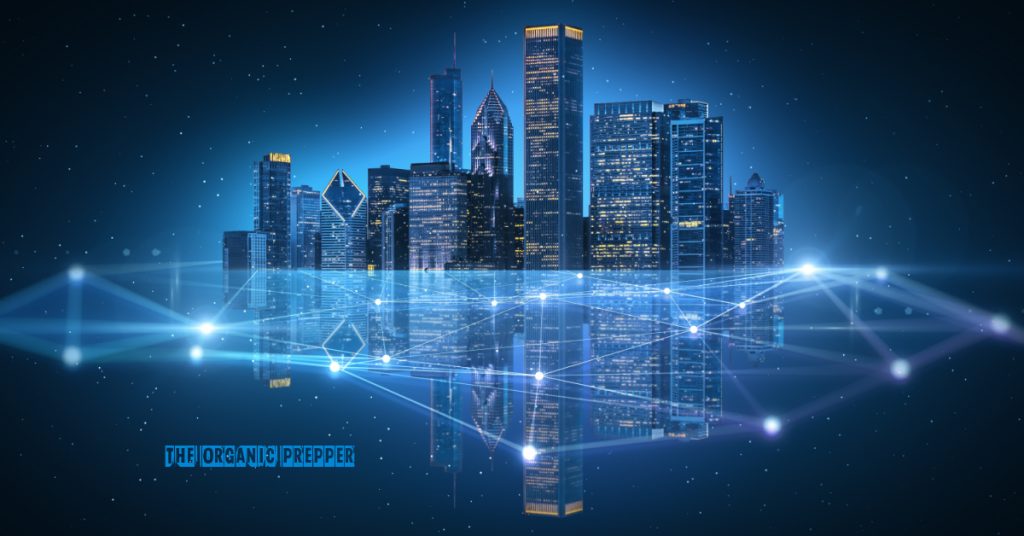by Daisy Luther, The Organic Prepper:

After the fires in Maui, a local resident nicknamed Auntie complained that Lahaina was slated to become a “satellite city” Residents posted on X (Twitter) that, before the fire, rumors had been circulating about a Digital City, or a 15-minute city, being set up on Maui Naturally the fact-checkers are treating these people like they’re just “conspiracy theorists,” but let’s look at what the new types of cities – also called Smart Cities – really are.
TRUTH LIVES on at https://sgtreport.tv/
What are Smart Cities?
“Satellite city” just refers to a smaller city next to a larger one. Think Fort Worth and Dallas. It’s possible that Auntie got her words mixed up and meant to say “Smart City” instead of satellite city. Or, she could have meant that Lahaina was supposed to be a satellite city for something bigger that was slated to be built.
Smart Cities are a different matter entirely. (People often use “smart city” and “digital city” interchangeably.) TWI, a multinational engineering and consulting firm, defines a smart city as one that “uses information and communication technology (ICT) to improve operational efficiency, share information with the public and provide a better quality of government service and citizen welfare”
Engineering firms like this believe that increased data collection through the use of cameras and sensors in cities can improve citizens’ quality of life by streamlining traffic and relieving congestion. There are projects already in place to turn places like Tokyo, Singapore, New York City, and Reykjavic into smart cities.
Smart cities aren’t a “conspiracy theory.” They’re engineering projects that have been underway for quite some time already.
Maui was actually home to an early smart city project, called JUMPSmart Maui. American and Japanese researchers installed electric vehicle charging stations throughout the island and worked with Nissan Leaf owners to collect data about how well the charging stations actually worked. This project explains why Maui residents have smart cities on their radar.
It’s important to note that we’re told not all smart city concepts consist of individualized data collection. While some smart cities, like those in China, certainly can use facial recognition tech to track individuals, companies trying to sell their services in Western countries insist that data collection can be done anonymously and only be used for traffic relief.
But we must remember that this can change depending on political winds. Our cell phone data was supposed to be anonymous, too, and yet the CDC bought the data from phone companies to evaluate compliance during lockdowns. I see no reason to assume data about movement within cities would remain permanently anonymous and inviolate, either.
Look at the Ultra Low Emissions Zone (ULEZ) in London. Mayor Sadiq Khan installed thousands of cameras across London to determine whether or not vehicles in the city comply with emissions standards, which most older vehicles do not. Many small business owners cannot afford to simply buy new vans, but noncompliant vehicles are fined £12.50 per day. In response, gangs of Londoners have vandalized huge numbers of traffic cameras.
Despite the promises of politicians and city planners, these cameras are not popular.
Then there are 15 minute cities.
A “15 minute city” refers to a city in which a person’s home and everything they need can be reached within a 15-minute walk or bike ride.
This, also, is getting a trial run in the U.K. Oxford has divided the city into six zones, and private cars will need permits to go into different zones, or they could face fines. While Oxford legitimately has traffic problems, residents are concerned that it will kill business in the city center because it will be so much more difficult for people to reach, and also simply push the traffic issues to surrounding areas as people are forced to change their driving routes.
British city planners claim the goal is to get more people to use public transportation. That can work, theoretically, if you live in an area where public transportation has not become dangerous, but that is increasingly rare.
Read More @ TheOrganicPrepper.ca



